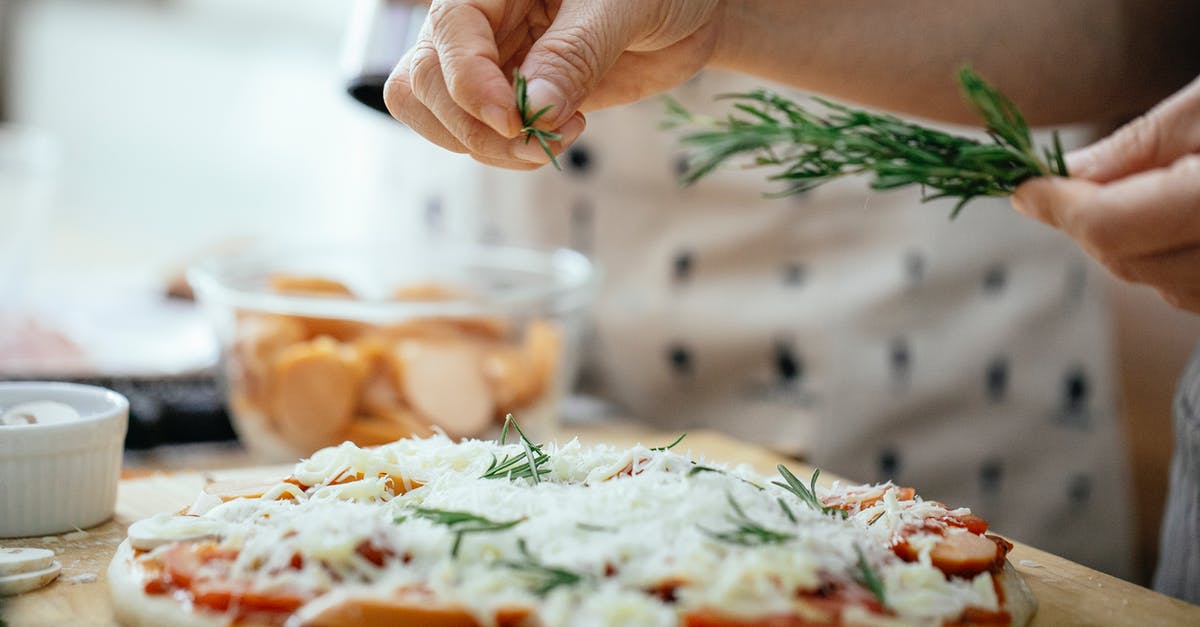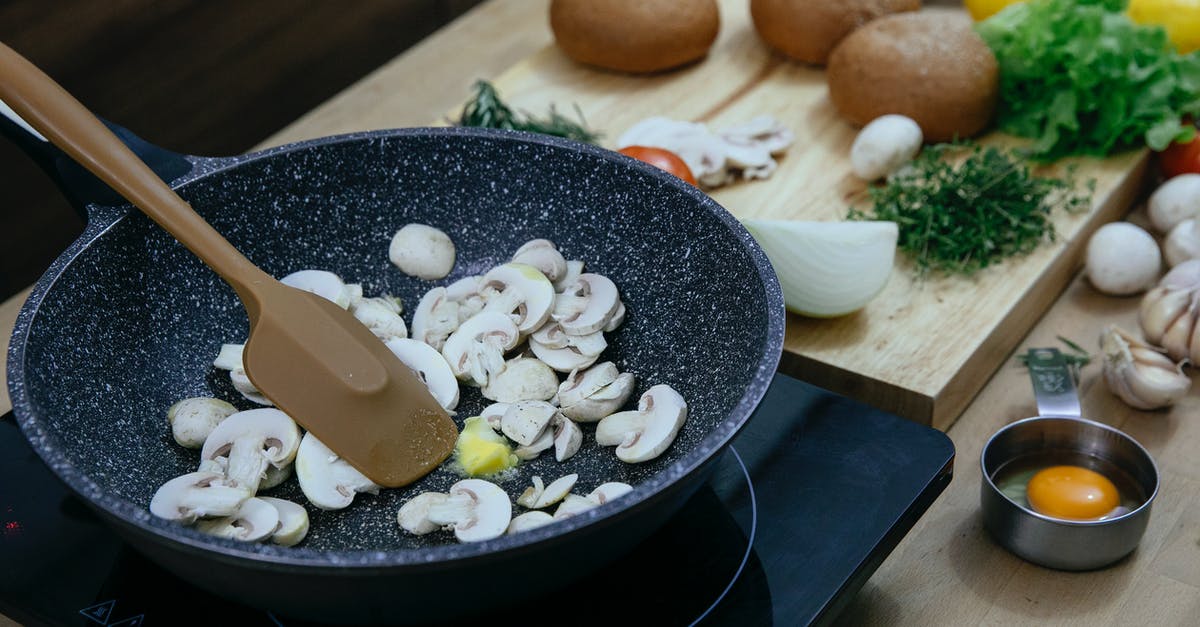How do I prepare ash bolete mushrooms for recipes?

I got about a grocery store paper bag in about 10 minutes under pine trees in the yard, so I was wondering what the best way to prepare the ash bolete mushrooms before using them in a recipe would be.
Best Answer
Every experienced forager knows that the first steps of preparation happen already at the place where you found the mushrooms. Most of what’s listed below is general advice for mushroom foraging, as it’s valid for your ash-tree boletes and hopefully helpful for other readers with similar questions.
In the wild:
- Pick only what you consider fit to eat and what you can identify with certainty1. Leave overly old, mushy, damaged, half-eaten, maggot-infested... mushrooms right where they are. With a bit of experience, you will recognize these before cutting them off. Let them be food for animals and disperse their spores.
- Check for hitchhikers like slugs, spiders and insects and remove them. A slimy trail left by a slug wandering all over the mushrooms in your basket is not pleasant.
- The same is valid for larger bits of dirt and debris. Even if one kind of mushroom is dry, others can be sticky (or get sticky during transport) and you’ll thank me later in the kitchen when you don’t have to painstakingly wash or pick of caked-on pine needles.
For some species, there are special steps recommend, e.g. removing the skin from slimy spike-caps. No specific treatment is necessary for ash-tree boletes. - Ensure freshness of your mushrooms by transporting them carefully, preferably in (shallow) baskets or, in a pinch, paper bags. Don’t pile them too high or delicate mushrooms at the bottom may get smushed. And don’t even think about putting them in plastic bags on a sunny day.
- The jury is still out re. the “cut vs. twist” debate, but as you want to cut off the bottom part of the stems anyway, you can simply cut the stem, especially if you will be using the mushrooms more or less immediately.
At home:
- Immediately after your return, do a second “hitchhiker and debris” check as described above. Use this also to make absolutely sure you have only edible mushrooms 1.
- If you have a mixture of mushrooms (and large harvest), consider sorting them. You can go by species, but group will often suffice, e.g. boletes in one pile, chanterelles in another. From a cook’s perspective, you will probably want to use them for different preparations anyway.
- Ideally, you will be preparing your mushrooms as soon as possible. Always consider the storage times for different mushrooms - chanterelles will keep in the fridge for a few days, a shaggy ink cap should hit the pan basically as soon as you come home. So plan accordingly. If you must store mushrooms, a paper bag in the vegetable drawer in the refrigerator is best. You want to prevent drying out, yet avoid condensation.
- Contrary to what you may have heard, mushrooms can be washed - but proceed with care. There’s a huge difference between a quick rinse to remove dirt and dust and soaking them in water. I personally would never wash very delicate mushrooms like the aforementioned shaggy ink cap, for example. For mature boletes, you may notice that the spongy hymenophore at the underside of the cap tends to soak up water (more on that below). A brush and a wet cloth or paper towel will come handy if you don’t want to wash your mushrooms. If you wash, do it before cooking the mushrooms, not before putting them in the fridge.
- Next, take a paring knife and cut off all damaged or dried-out bits, stem ends (if not done at the forest) etc.
- For some kinds, halving them lengthwise is recommend - morels, for example, have hollow stems and I have removed more than one small slug that had gnawed a little hole in it and taken up residence inside. Boletes sometimes have lots of fly larvae mining through the stem and later the cap, a quick cut will help you gauge the degree and whether it’s usable. In general, if you see “pin pricks” when cutting crosswise, you may want to investigate further.
- The spongy layer of boletes is often discussed. As described above, it soaks up liquids and becomes mushy, sometimes slimy during cooking. Some eaters find this very unpleasant. I suggest removing it for larger mushrooms and leaving it for young ones where it’s thinner and firmer. My personal rule of thumb: if you can squish it with your thumb, it gets removed. A teaspoon or melon baller is a good tool for this. If you plan on making something where the mushrooms are cut finely (duxelles) or puréed, you can ignore this bit.
For the ash boletes in the question, this is not applicable: their tube layer is hard to remove and as it’s comparatively thin, it won’t be much of an issue. For very old specimens, you could try scraping it off nevertheless. As I said, it’s largely a matter of taste (or rather texture, as the actual taste is not different).
Now your mushrooms should be prepared for whatever dish you planned. Cut as needed and proceed with your recipe.
As you asked about separating caps and stems, note that some mushrooms have stringy, fibrous stems. Boletes in the other hand are “use everything” mushrooms.
1 The importance of a proper id can’t be stressed enough. If you come across a mushroom that you want to identify at home or are unsure about, keep it separate from the general collection in your basket and observe as many details as you can. Consider digging out the stem instead of cutting and note the flora around. Photos help. Never taste an unknown mushroom and I have cleaned my knife after cutting “mystery mushrooms”. Exaggerating? Perhaps. But as they say, there is no such thing as an old, bold mushroom hunter."
Pictures about "How do I prepare ash bolete mushrooms for recipes?"



How do you cook bolete mushrooms?
Cooking Fresh Boletes The simplest method of preparation is to saut\xe9 them in olive oil and butter, then add a rich brown sauce and serve as a side dish with steak, broiled chicken, or fish. Or layer fried mushrooms over rice, or baked, or mashed potatoes.How do you process a bolete?
Bay boletes are superb edible mushrooms, but should be cooked. When you fry them, turn up the heat at first to lock in moisture and maintain their springy texture. The caps of older specimens tend to become slimy. If the slime is too off-putting, you can remove the skin from the mushroom's cap with the tip of a knife.How do you cook bay boletes?
Gyroporus cyanescens a.k.a the cornflower (as in cornflower blue), or blueing bolete is probably the best example I know of for a mushroom that stains blue after being cut that's really worth getting to know.Bolete \u0026 Suillus Mushroom Identification with Adam Haritan
More answers regarding how do I prepare ash bolete mushrooms for recipes?
Answer 2
In Italy, my family picks mushrooms during the season, brushes them thoroughly (no washing allowed), lightly fries them in a ton of virgin olive oil and then pours the still hot olive oil / mushroom mix into jars and then adds more hot olive oil until all parts are covered and then seals the jars and they'll keep for a year like that.
If you don't like olive oil; use another neutral oil with a hight smoke point like grape seed oil.
Sources: Stack Exchange - This article follows the attribution requirements of Stack Exchange and is licensed under CC BY-SA 3.0.
Images: Flora Westbrook, Flora Westbrook, Katerina Holmes, Katerina Holmes
